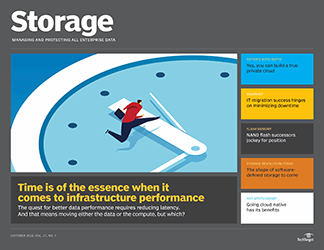PRO+ Premium Content/Storage
Access your Pro+ Content below.
New memory technologies challenge NAND flash dominance

This article is part of the Storage issue of October 2018, Vol. 17, No. 7
Flash memory rose to prominence as soon as Intel shipped the first NOR chips in 1988. NOR, in turn, paved the way for NAND flash three years later. NAND enjoyed the fastest adoption of any semiconductor technology ever, ramping from $1.8 billion to $18 billion in 10 short years. By 2017, the technology hit a record $50 billion in revenue, matching the size of the global semiconductor market of 1990. NAND flash is clearly big business. But change looms as the industry develops several new memory technologies as possible replacements. NAND flash faces hard limit During the past 40 years, the number of transistors on a semiconductor chip doubled every year or two by reducing the size of a single bit by an average of 30% a year thanks to Moore's Law. This, in turn, drove cost reductions that enabled chips to find broader use. These 30% reductions are called process shrinks, and the ongoing phenomenon of constant size and cost reductions is known as scaling. Continuing shrinks could be sustained for most semiconductors, but flash ...
Features in this issue
-
Improve infrastructure performance with these compute and data tips
Perpetual hunger for better and faster application performance often requires reducing latency by either moving the data to the compute or the compute to the data, but which one?
-
IT migration success hinges on minimizing downtime
Data, software and hardware migration projects should, but don't always, fully exploit the features and settings of the new environment and minimize application downtime.
News in this issue
-
Yes, a true private cloud can now be built
Forget everything you've heard about private cloud storage and start over with a true set of building blocks designed to let you create a public cloud-like infrastructure.
Columns in this issue
-
StorOne storage is set to disrupt the software-defined market
StorOne's TRU Storage technology raises the bar for software-defined storage by gathering together universal pools of storage across disparate hardware that any workload can use.
-
Maximize cloud storage benefits with cloud-native data
A cloud storage strategy must acknowledge that storage is but one part of cloud use and involves storage and compute, as well as data that's accessible to all cloud resources.
